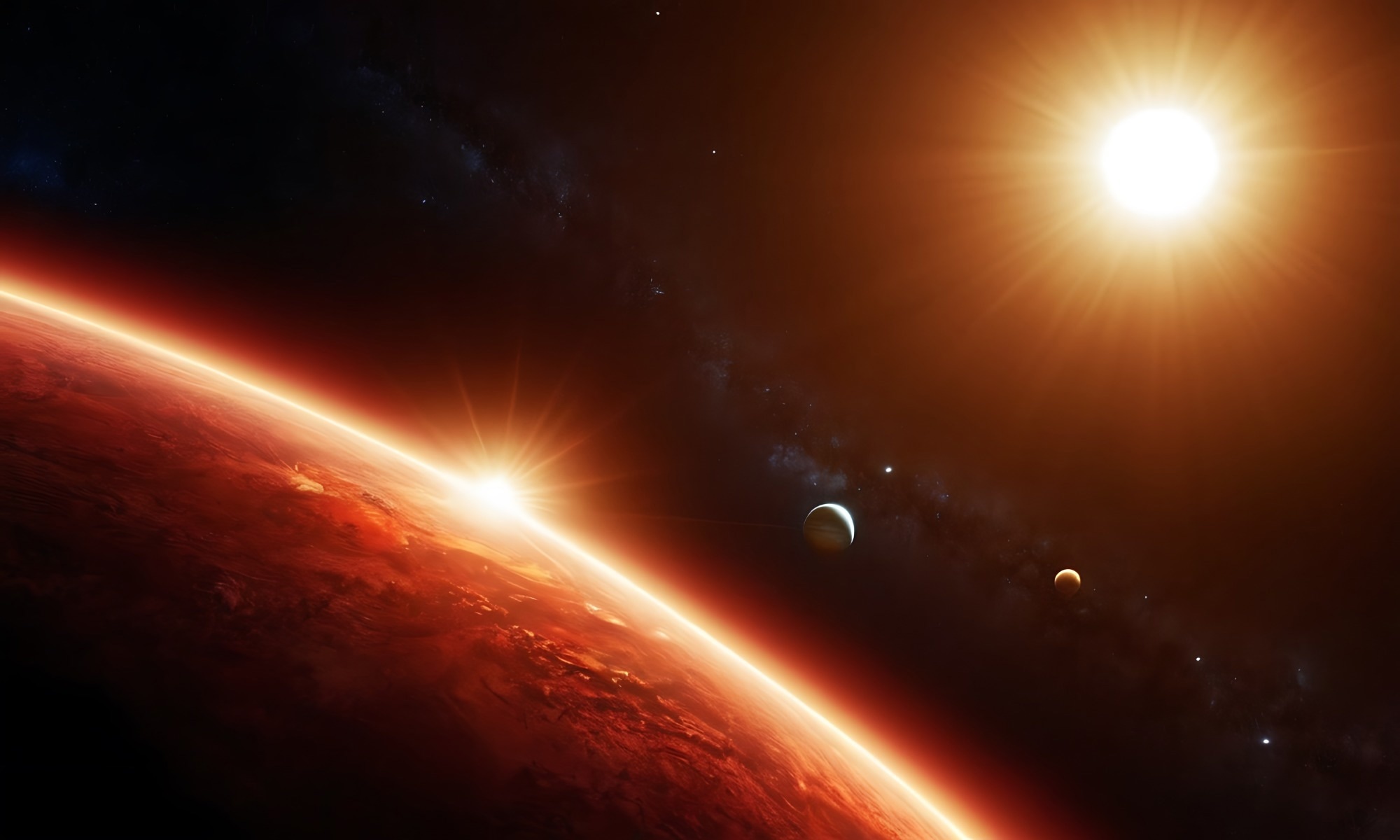In a study published in AGU Advances, researchers examined samples from the asteroid Ryugu, uncovering signs of a weak magnetic field that existed during the first few million years after our solar system began to form.
 Study: Evidence for Magnetically-Driven Accretion in the Distal Solar System. Image Credit: Piysho/Shutterstock.com
Study: Evidence for Magnetically-Driven Accretion in the Distal Solar System. Image Credit: Piysho/Shutterstock.com
By re-analyzing meteorites such as Tagish Lake, Tarda, and Wisconsin Range 91600, they found that these ancient rocks carry magnetic traces from the solar nebula phase. This insight clears up conflicting earlier reports and suggests that even a faint magnetic field in the outer solar system could support material coming together at rates similar to those closer to the sun.
Related Work
Earlier research on particles from the asteroid Ryugu found magnetite with unique, bead-like structures, which seem to hold ancient magnetic records from when water altered these particles. Scientists believe this magnetite formed far out in the solar system, beyond the regions where carbon dioxide (CO2) and water freeze (H2O), or the "snow lines."
By using manganese-chromium (Mn-Cr) dating, they determined that this magnetite developed while the solar system’s original magnetic field was still active. Later analyses revealed that these particles also experienced intense heating after they formed, adding more depth to their journey through time.
Analysis of Ryugu Particles
In this study, three particles from the asteroid Ryugu—A0397, C0085, and C0006—were analyzed by the Japan Aerospace Exploration Agency (JAXA).
A0397, sourced from sample chamber A, had previously only been examined through catalog imaging. In contrast, C0085 and C0006, extracted from sample chamber C, had undergone minimal preliminary analyses, including examination with MicrOmega (a microscopic and infrared imaging instrument for observing asteroids) and multiband spectroscopy.
A0397, collected from an undisturbed surface area on Ryugu, measured 1.62 mm and weighed 1.2 mg. C0006, from a subsurface region impacted by an artificial projectile, was 4.51 mm long with a mass of 16.3 mg.
C0085, also a subsurface sample, was 1.98 mm long, split into two fragments (C0085a and C0085b) during analysis, and weighed 1.2 mg. While A0397 was selected for in-depth paleomagnetic studies, C0085 and C0006 were allocated for shorter-duration analyses.
The natural remanent magnetization (NRM) of particles A0397 and C0085 was measured using a superconducting rock magnetometer (2G SRM) at the Massachusetts Institute of Technology (MIT) Paleomagnetism Laboratory.
Both samples were placed in acid-washed quartz wells packed with non-magnetic silica nanopowder to ensure stability during measurements. They then underwent alternating field (AF) demagnetization from 0 to 145 mT, with measurements taken at increments of 0.5–1 mT and additional steps between 15–20 mT up to 400 mT.
To correct for gyroremanent magnetization, researchers applied the Zijderveld-Dunlop method. Meanwhile, the NRM of C0006 was demagnetized and analyzed separately at Kochi University using an alternative experimental setup. The NRM components were closely examined for directional alignment and angular deviation to confirm they reflected primary magnetic records from magnetite formation.
Paleointensity estimates were obtained through anhysteretic remanent magnetization (ARM) and isothermal remanent magnetization (IRM) methods. These techniques involved comparing the demagnetization of ARM with NRM values, with empirical adjustments applied to enhance accuracy. The ARM and IRM methods included adjustments for varying coercivity components, accounting for the effects of magnetite formation and any secondary magnetic overprints.
High-coercivity (HC) paleointensity values were further refined using recent grain growth studies, though certain pressure-related adjustments were not applied. Alternative methods such as residual anhysteretic remanent magnetization (AREMc) and residual isothermal remanent magnetization (IREMc) were also utilized to improve robustness and mitigate potential noise.
Fidelity tests were performed to assess the reliability of paleointensity data by creating pseudo-NRM fields and comparing the measured intensities with controlled laboratory values. Parameters like difference (D') and error (E) helped validate the accuracy of these methods, though time constraints prevented testing on C0006.
Lastly, a viscous remanent magnetization (VRM) experiment was conducted on A0397 to examine its low and medium coercivity components. This process involved demagnetizing the sample and exposing it to Earth's magnetic field for 19 days, allowing researchers to observe VRM acquisition and decay, which provided insights into the sample’s long-term magnetic stability.
Magnetic Characterization of Ryugu
AF demagnetization of the NRM in Ryugu particles A0397, C0085b, and C0006 revealed distinct coercivity components among the samples. Particle A0397 exhibited low coercivity (LC) and possible medium coercivity (MC) components, while C0085b showed an LC component along with an origin-trending MC component. In contrast, C0006 displayed only an LC component, though the larger demagnetization step sizes used may have prevented the detection of an MC component.
Paleointensity estimates from ARM and IRM methods revealed varying values across the samples. Fidelity tests helped establish upper paleointensity limits for A0397 and C0085b. The VRM experiment on A0397 indicated a small proportion of total LC and MC components, providing valuable insights into the sample’s magnetic stability over time.
Conclusion
In summary, earlier studies suggested that the solar nebular field was strong enough to drive material buildup across different distances from the sun, though its exact strength in the outer solar system was less clear.
By analyzing samples from Ryugu, researchers found no direct evidence of this early magnetic field but were able to set a cap on how strong it might have been.
When scientists re-examined meteorites like WIS 91600, Tagish Lake, and Tarda, they detected signs of a faint but still active nebular field in the far reaches of the solar system, likely capable of supporting accretion. This finding aligns with previous suggestions of a weak magnetic field beyond 7 AU from the sun.
Journal Reference
Mansbach, E. N., et al. (2024). Evidence for Magnetically-Driven Accretion in the Distal Solar System. AGU Advances, 5:6, e2024AV001396. DOI: 10.1029/2024AV001396, https://agupubs.onlinelibrary.wiley.com/doi/10.1029/2024AV001396
Disclaimer: The views expressed here are those of the author expressed in their private capacity and do not necessarily represent the views of AZoM.com Limited T/A AZoNetwork the owner and operator of this website. This disclaimer forms part of the Terms and conditions of use of this website.